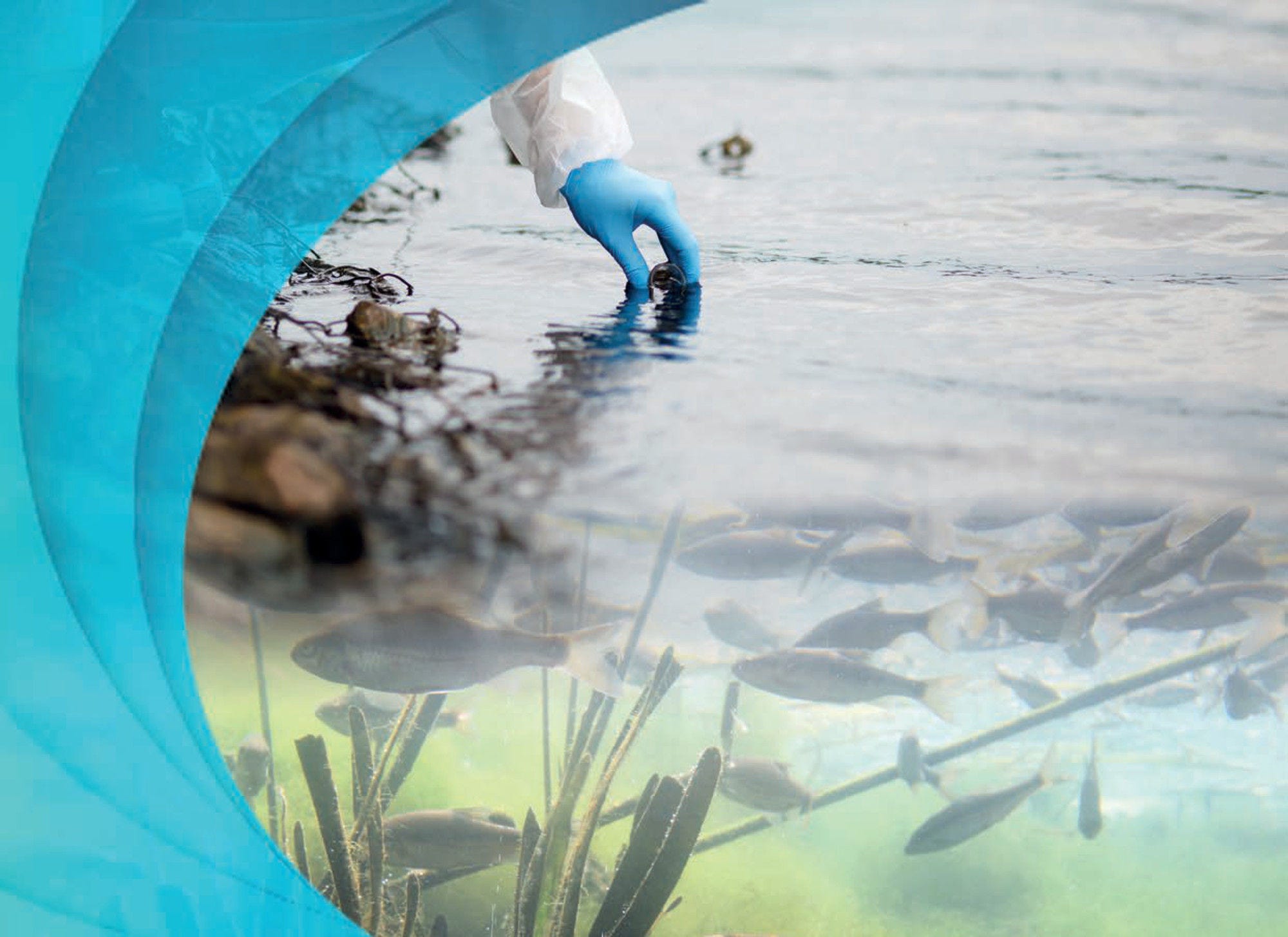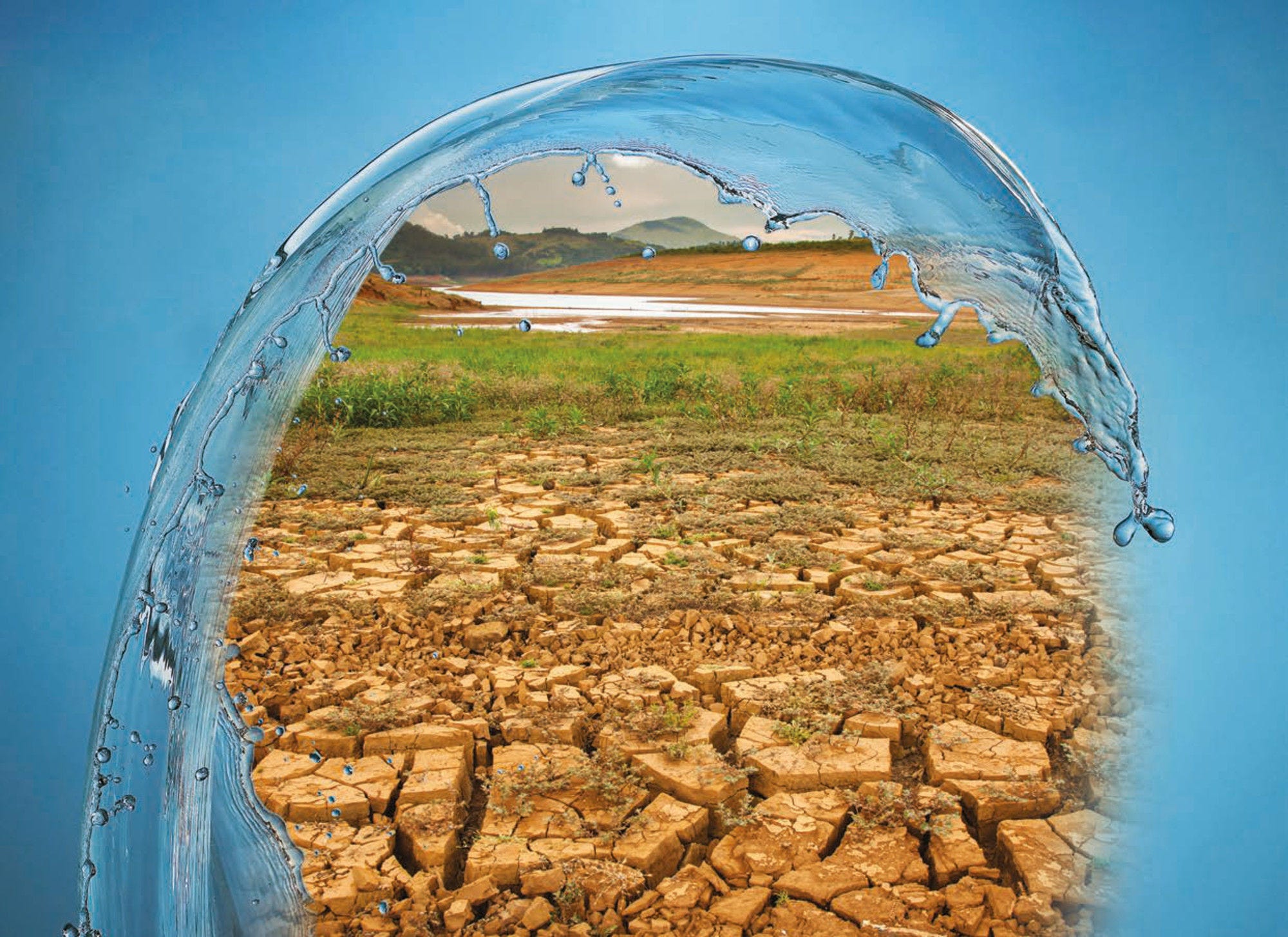Endocrine disrupting chemicals (EDCs) are contaminants of emerging environmental and health concern that have been detected in freshwater, wastewater and drinking water. They interfere with the endocrine system in humans and wildlife, and produce adverse effects such as developmental, reproductive, neurological and immune effects. Their presence in water raises concerns for the integrity of ecosystems and biodiversity. Addressing the challenges of EDCs in water is particularly complex due to their ability to trigger adverse effects at very low concentrations, their potency in mixtures with other chemicals, and the vast range of sources and entryways of this group of chemicals into the environment. This report presents new water quality monitoring methods, such as bioassays and non-targeted analysis, that are well equipped to capture the impacts of EDCs in water. These new methods supplement the traditional substance-by-substance chemical analysis of water quality. The report also outlines policy instruments to manage the chemicals’ lifecycle from source to end-of-pipe. It proposes tools and regulations that respond to the negative effects of endocrine disruption, even if the culprit chemical is still unknown. The analysis draws on case studies from OECD countries to provide practical examples and concrete policy actions.
Endocrine Disrupting Chemicals in Freshwater

Abstract
Executive Summary
Endocrine disrupting chemicals in water may affect human health and wildlife
Exposure to endocrine disrupting chemicals (EDCs) can lead to negative health outcomes in humans and wildlife as EDCs interfere with the endocrine system of hormones and glands. EDCs can be found in household products, consumer products, agriculture, aquaculture, industrial production, and transportation. Humans are exposed through food, consumer products, air, or water, amongst others. Similarly, EDCs are released into the environment through excretion, landfills, runoff from agriculture and urban areas, industry and leaching of wastes. They are not fully captured by wastewater treatment plants, leading to detected contamination of rivers, lakes, groundwater, estuaries, sediments, wastewater, and drinking water.
Human exposure to EDCs could lead to birth defects, can affect neurodevelopment conditions and reproductive health, and is also linked to obesity and metabolic diseases. In wildlife, EDCs affect physiology, behaviour or health, notably through alterations of the hormonal system, reproductive dysfunctions, and the feminisation of male fish. Aquatic organisms are continuously exposed to EDCs when living in a contaminated habitat. Contamination can cascade onto other organisms, populations and communities, through food chain for instance.
Parts of the costs of exposure to EDCs can be monetised. Estimated health care costs amount to CAD 24.6 billion in Canada; EUR 163 billion in the European Union; and USD 340 billion in the United States. The health-related costs from the exposure to per- and polyfluoroalkyl substances (PFAS), a group of persistent chemicals associated with environmental and human health concerns including endocrine disruption, have been estimated to range from EUR 2.8-4.6 billion, and the estimated environment-related costs ranged from EUR 46 million – EUR 11 billion over 20 years.
Managing and monitoring EDCs in water is a challenge and effect-based tools, such as bioassays, have distinctive advantages
EDCs are distinctively challenging to monitor and manage, which affects the effectiveness of regulation in OECD and non-OECD countries. Endocrine disruption is characterised by uncertainty. EDCs originate from a diverse group of uses, products and processes. They can circumvent traditional ways of monitoring as they trigger adverse effects at concentrations lower than detection limits of traditional chemical analysis. Moreover, only a fraction of all EDCs is regularly monitored.
Prevailing methods of substance-by-substance analysis of chemical concentrations in water have reached their limits. Additional monitoring tools better capture the effects of EDCs and their mixtures and are increasingly applied across OECD countries:
Targeted chemical analysis (substance-by-substance monitoring), testing on concentrations of a given substance in a water sample, is a common practice to keep.
Bioassays (effect-based monitoring) are recommended as additional method. Bioassays are in vitro (cells or cell-free) or in vivo (whole organism) methods that detect and quantify the effects of chemicals on toxicological endpoints, e.g., Estrogen, Androgen, Thyroid and Steroidogenesis.
In situ wildlife monitoring methods are valuable supplements. They survey species in the wild for physical, molecular or behavioural changes, potentially caused by exposure to EDCs.
Non-targeted analysis, such as high-resolution mass spectrometry or eDNA, is encouraged to obtain a snapshot picture of water quality, species richness and to identify culprit chemicals.
Effective policies focus on adverse effects on humans and wildlife, address the full lifecycle of EDCs and are strengthened by multilateral action
Policies that tackle the effects of EDCs, without initial knowledge of the culprit chemical, can effectively reduce and respond to the risk of EDCs in water, at the least cost, while mitigating monitoring challenges and knowledge. Effect-centred policy approaches can be clustered as below:
Response plans or protocols can quickly mobilise action following observed abnormalities in bioassays or wildlife. Such plans reduce the lag time between a suspected risk and action.
National action plans on EDCs can build bridges across sectors, strengthen monitoring, assessment, and information, reduce uncertainties, and send a policy signal.
Regulatory environmental quality standards based on effects or endpoints, instead of single chemical concentrations, capture the risk of EDCs. This involves setting effect-based trigger values or threshold values that determine the acceptable level of risk.
Policy interventions that consider the impact of EDCs on vulnerable populations (including risk assessments specific to vulnerable groups, information campaigns, and assessment of biodiversity changes specific to endangered species and cultural keystone species) can reduce vulnerability.
Effective responses consider a broad range of entry points, as EDC emissions are influenced by several stages of the lifecycle of chemical product design and production. They combine:
Source-directed approaches, such as chemicals assessments (e.g., groupwise assessments), substance bans, maintaining public EDC lists (confirmed and suspected), and product design.
Use-oriented approaches, such as labelling consumer products, public environmental campaigns, substance restrictions, and best environmental practices for sectors.
End-of-pipe approaches, such as improved wastewater treatment, setting standards for wastewater reuse and sewage sludge recovery, and discharge permits.
EDCs are transported across international basins or trade, and their impacts are global. What is more, water quality monitoring tools are standardised at international level. International actions could focus on:
Upscaling the standardisation and verification of test methods that are appropriate for water quality testing, based on the mutual acceptance of data principle.
Stimulating the demand for and development of new bioassays, based on non-animal methods, relevant to water quality testing.
International research partnerships are essential for sharing knowledge and data, reducing uncertainties, supporting the transition to new technologies and supporting regulatory processes.
Mainstreaming the issue of endocrine disruption in international science-policy agendas, such as the One Health agenda, to address pollution by endocrine disrupting chemicals at the global scale.
In the same series
Related publications
-
 29 May 2024
29 May 2024 -
 Working paper24 May 2024
Working paper24 May 2024








